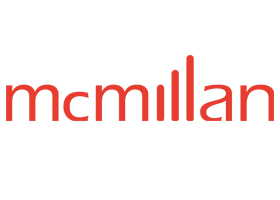


Defending Dignity in the Dawn of Deepfakes
Defending Dignity in the Dawn of Deepfakes
Introduction
On January 29, 2024, in an era dominated by digital connectivity and rapid technological advancements, British Columbia’s Intimate Images Protection Act (Act) came into force.[1],[2]
As discussed in our previous bulletin “Navigating the Pixelated Landscape,” the Act introduces a legal framework to address the escalating concerns surrounding image misuse and the non-consensual sharing of intimate images. Of note, the Act provides for a simplified judicial process to combat the non-consensual sharing of intimate images. The Act not only addresses traditional privacy infringements but also incorporates measures to combat the rising threat of the misuse of deepfake technology.
The Growing Threat of Deepfakes
Deepfakes are manipulations of audio, video, and text content that can be deceptive, yet convincing, depictions of individuals. Fueled by artificial intelligence, machine learning, and ease of access, deepfake technology has emerged as a serious concern in recent years – especially since it can be easily misused in a harmful way. Although legal recourse in the common law is available to address the misuse of deepfake technology – including some Canadian provinces’ recognition of the tort of false light, and other holistic recourse – statutory law had, in general, remained a work in progress. This Act forms a part of Canada’s evolving statutory laws that address, at least in part, misuses of deepfake technology, and provides complainants with a roadmap on how to seek legal recourse in situations where such complainants have been “deepfaked” in the context of intimacy.
Internet Intermediaries and Administrative Penalties
Internet intermediaries[3] are not immune from this Act, and the Act’s Regulation provides for administrative penalties against individuals, intermediaries, and other entities should such entities fail to comply with orders made under the legislation. In cases of non-compliance: (i) individuals may face a maximum penalty of $500 per day, up to a total maximum of $10,000;[4] and (ii) internet intermediaries or other entities may face a maximum penalty of $5,000 per day, up to a total maximum of $100,000.[5] These penalties are certainly intended to discourage the dissemination of non-consensual intimate images and deepfakes.
Key Aspects of the Intimate Images Protection Regulation
The Act’s Regulation also authorizes minors, as young as 14 years of age, to apply to the Civil Resolution Tribunal (the “CRT”) for relief.[6] A minor who is 12 years of age or over may authorize another individual to apply to the CRT for relief on their behalf under the Act.[7]
The Act’s Regulation further includes parameters around:
- factors that a decision maker must consider in an application for expedited intimate image protection order including: (i) the potential for an expedited order to mitigate harm; (ii) the personal circumstances of the individual depicted in the intimate image; and (iii) the circumstances in which the individual is depicted in the intimate image;[8]
- classes of individuals who may apply for relief;[9]
- classes of individuals who may be authorized by a minor or adult on a victim’s behalf
- the publication ban factors;[10] and
- the date that the administrative penalty must be paid.[11]
Conclusion
The Act is a welcomed development in British Columbia’s laws surrounding digital privacy protection and combatting the misuse of AI technology such as deepfakes. How successful the Act is at limiting the risks posed by the misuse of technologies like deepfakes will play out in the next few years. However, the introduction of the Act demonstrates that our laws continue to adapt and respond to our ever changing social and legal landscape.
By: Robert Piasentin, Pablo Tseng, Victoria Kolt (Articling Student)
[1] SBC 2023, c 11.
[2] BC Gov News, “New services help people protect their intimate images” (January 2024), online: BC Gov News.
[3] The Act defines an “internet intermediary” as “an organization that hosts or indexes third party content through an online platform.” See Supra, note 1 at s 1.
[4] Intimate Images Protection Regulation BC Reg 293/2023, s 9(1)(a).
[5] Ibid at s 9(1)(b).
[6] Ibid at s 4.
[7] Ibid at s 5.
[8] Ibid at s 2.
[9] Ibid at s 3.
[10] Ibid at s 8
[11] Ibid at s 10.
A Cautionary Note
The foregoing provides only an overview and does not constitute legal advice. Readers are cautioned against making any decisions based on this material alone. Rather, specific legal advice should be obtained.
© McMillan LLP 2024
Insights (5 Posts)View More
Shifting Gears – Canada to Consider New Motor Vehicle Equipment Regulations to Help Prevent Auto Theft
Transport Canada announces plan to update safety standards to combat auto theft.
Budget 2024: Legislative Changes of Note for Investment Funds
In Budget 2024, the Government acknowledges that the restrictions placed on the property that may be held by registered plans have become unduly complex.
Budget 2024: Clean Energy Incentives and Resource Sector Measures
Budget 2024 prioritizes Canada’s transition to a net-zero economy and contains several measures aimed at facilitating that ongoing transition.
Budget 2024: Synthetic Equity Arrangement Restrictions Tightened
Budget 2024 proposes to tighten the “synthetic equity arrangement” anti-avoidance rule by eliminating the no “tax-indifferent investor” exception.
Budget 2024: Increases in the Taxation of Capital Gains
Budget 2024 proposes to significantly change how capital gains are taxed under the Income Tax Act (Canada).
Get updates delivered right to your inbox. You can unsubscribe at any time.




